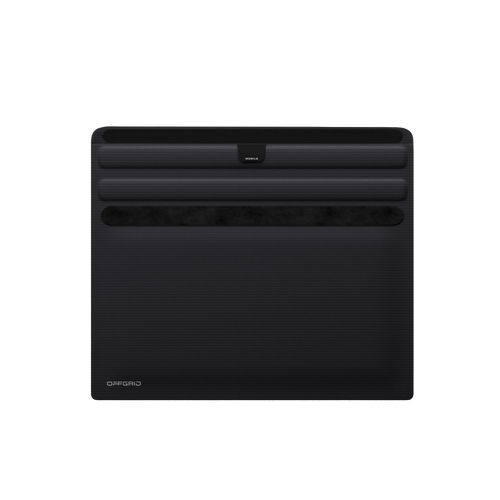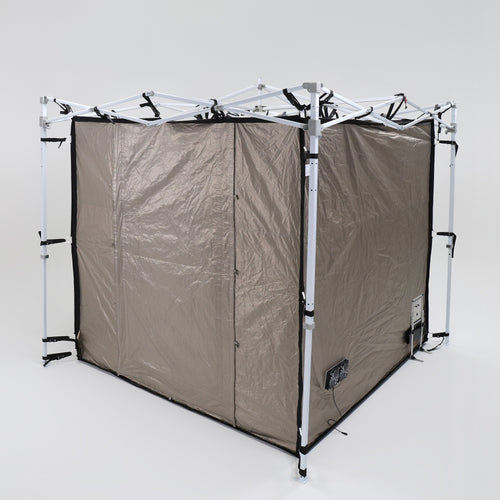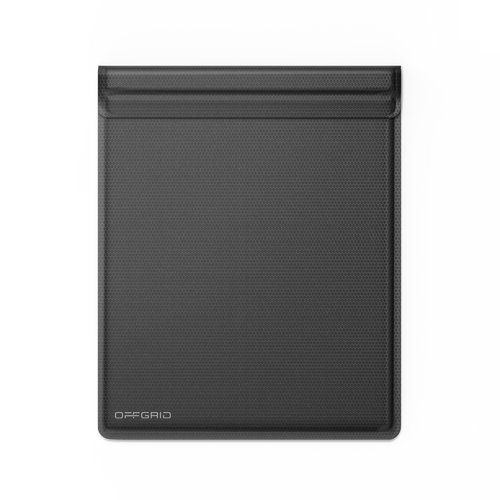Welcome to the blog for OffGrid.co - your trusted source for off-grid gear, preparedness insights, and device protection when the grid goes down. Today we'll dive deep into the world of electromagnetic shielding and compare three related but distinct items: the Faraday cage, the Faraday bag, and the Faraday blanket. By the end you’ll understand what each is, when you’d use it, and which might be right for you.
What is Faraday Shielding (The Science Behind It)
At the heart of all three tools is the principle of electromagnetic shielding (or RF shielding), which essentially prevents external electromagnetic fields (EMFs) from interfering with or penetrating the protected space.
The concept was first demonstrated by Michael Faraday in 1836 — hence the name “Faraday”.
In brief: a conductive enclosure redistributes incoming electric fields so that the interior is isolated from the external electromagnetic environment.
From a preparedness/off-grid perspective, such shielding is valuable for protecting electronics from:
-
Radio frequency (RF) interference
-
Tracking of devices (via GPS, cellular)
-
Electromagnetic pulses (EMPs) or solar flares
-
Signal hacking of key fobs, radios, etc
Faraday Cage
Definition & Key Features
The Faraday cage is the “classic” model: a rigid or semi-rigid enclosure made of conductive material (metal sheet, mesh, etc.) that isolates whatever is inside from external electromagnetic fields.
Use Cases
-
Storing larger electronics (backup radios, laptops, batteries) in a fixed location (garage, bunker).
-
Protecting equipment in an EMP or solar-CME scenario.
-
Laboratory or vital-infrastructure settings where maximum shielding is required.
Pros & Cons
Pros:
-
Very strong shielding potential if built correctly.
-
Can handle bulk or large items.
Cons: -
Not very portable.
-
Requires careful build: gaps, seams, poor contacts reduce effectiveness.
When to Choose a Faraday Cage
If you have a fixed base, need to protect multiple or large devices, and size/portability isn’t a priority, a cage is a strong choice.
Faraday Bag
Definition & Key Features
A Faraday bag is a flexible pouch or container lined with conductive material designed to block signals and EMFs. It uses the same principle as a cage but in a compact, often portable form.
Use Cases
-
Carrying a smartphone, tablet, key-fob or small electronics when you want signal isolation/tracking protection.
-
Travel, off-grid camping, bug-out scenario where mobility is key.
-
Everyday privacy/security use (blocking tracking signals, RFID).
Pros & Cons
Pros:
-
Highly portable and easy to deploy.
-
Good for everyday carry and mobile protection.
Cons: -
Smaller capacity (only fits certain devices).
-
Quality matters - not all bags deliver full shielding; some may still leak signals.
When to Choose a Faraday Bag
When you want to protect individual devices on the move (e.g., smartphone, key-fob, GPS) and keep things compact.
Faraday Blanket
Definition & Key Features
A Faraday blanket is less well-known, but essentially a large fabric made with conductive threads or mesh designed to shield a body, piece of equipment or area from electromagnetic radiation. Materials may include silver or other conductive threads.
Use Cases
-
Personal protection from ambient EMF (for those sensitive to electromagnetic exposure).
-
Using over devices or while working on a laptop to reduce signal exposure.
-
Draping over equipment or area when you need a flexible shielding layer.
Pros & Cons
Pros:
-
Flexible coverage (can wrap/couch, travel use).
-
Useful for shielding people (not just devices).
Cons: -
Not necessarily as robust as a rigid cage for worst-case EMP scenarios.
-
Effectiveness depends heavily on material quality and how well it’s deployed.
When to Choose a Faraday Blanket
If you’re looking for a flexible, personal-scale shield - e.g., working on electronics, traveling with a laptop, sleeping under a blanket that reduces RF exposure.
Comparative Summary
| Feature | Faraday Cage | Faraday Bag | Faraday Blanket |
|---|---|---|---|
| Size / Portability | Large, often stationary | Compact, portable | Medium-large, flexible |
| Capacity | Can hold many/larger devices | Fits 1–few small devices | Can cover body or multiple small items |
| Best for | Fixed-station protection | Mobile device protection | Personal or area shielding |
| Construction | Metal/mesh, rigid enclosure | Conductive-lined flexible pouch | Conductive fabric or metal-thread textile |
| Weaknesses | Bulky, less mobile, build-sensitive | Smaller capacity, quality varies | May offer less EMP protection |
Choosing the Right One for Your Off-Grid Needs
At OffGrid.co, we know that prepping means nuance - there isn’t a one-size-fits-all solution. Here are some questions to guide your choice:
-
What devices or items are you protecting?
-
Just a smartphone or car key-fob? A bag may suffice.
-
Multiple radios, laptops, batteries? A cage or a large shielded box might be better.
-
Concerned about your body’s exposure while using electronics? Look at a blanket.
-
-
Will you be on the move or fixed location?
-
Travel-ready → Bag or Blanket.
-
Home base / bunkered → Cage/Tent
-
-
What threat level are you planning for?
-
Everyday tracking/privacy → Bag or Blanket.
-
High-impact threat (EMP, solar flare) → consider robust cage plus backups.
-
-
Quality of construction matters.
-
For bags: ensure proper conductive lining, seal, closure.
-
For cages: ensure no gaps, good grounding or conductive continuity.
-
For blankets: ensure material specifies attenuation (dB reduction) and covers relevant frequencies.
-
Practical Tips from OffGrid.co
-
Test your shielding: After depositing devices in a Faraday bag, test for signal (cell, WiFi). If still connects, the bag may not be functioning properly.
-
Seal gaps in cages/tents: A cage is only as strong as its weakest seam. Even small flaws can allow leakage.
-
For blankets, ensure full coverage and consider use case: e.g., a blanket wrapped around you while you use your laptop on your lap.
-
Layer your protection: You might use a cage for bulk storage plus bags for portable gear plus blankets for personal shielding.
-
Maintenance matters: Wear and tear, damage, corrosion can reduce effectiveness of any shielding device.
-
Know what you’re shielding against: Tracking & RF interference vs. solar flare/EMP — these entail different design considerations.
Final Thoughts
In summary:
-
The Faraday cage is the heavyweight guardian for large-scale, fixed protection.
-
The Faraday bag is the everyday carry mobile shield for individual devices.
-
The Faraday blanket adds flexible coverage - personal or area scale - and fills a niche between device-only and full-cage protection.
At OffGrid.co, we recommend assessing your specific gear, mobility needs, threat profile, and then choosing the shielding tool (or combination) that fits. Whether you’re shielding a laptop in your bug-out bag, protecting your key-fob from signal theft, or setting up a secure storage area for radios and backups, these tools have their place, when selected wisely.
Stay prepared. Stay shielded.




